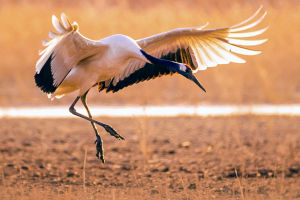The red fox is a small, orange-brown fox that is roughly the same size as a domestic cat. It is found throughout the grasslands of western North America, including Montana, Colorado, New Mexico, Kansas, Oklahoma, and Texas.
The species can be found in southern Manitoba, Saskatchewan, and Alberta, Canada. Although some mammalogists have classified the red fox and the kit fox as the same species, molecular phylogeny indicates that the two species are distinct. Hybridization between the two species is possible where their ranges overlap, but the range of this hybridization is limited.
Red foxes are typically found in short-grass grasslands and deserts and were nearly extinct in the 1930s due to predator control programs. However, they were successfully reintroduced and their conservation status is now listed as Least Concern by the IUCN due to stable populations in other areas.
Like most canids, the red fox is an omnivore with a diet that includes grass, fruit, small mammals, carrion, and insects. They have a lifespan of 3 to 6 years in the wild, and breeding occurs once a year from late December to March. The breeding areas vary by geographic region, and babies are born anywhere from March to mid-May and are weaned at six to seven weeks of age.
The body color of the red fox is dark gray and tan, extending to tan on the sides and legs. The throat and belly color vary from pale yellow to white, and they have a black tail tip and large ears. They stand about 12 inches (30 cm) tall and 31 inches (79 cm) long, weighing between five and seven pounds. While males and females are similar in appearance, males are slightly larger.
Red foxes live in shortgrass prairies and western prairies, nesting in open grasslands, cultivated fields, or sandy soils along fence lines. Native to the Great Plains region of North America, their range extends north into southern Alberta and Saskatchewan, Canada, and south into Texas. It stretches from western Iowa to Colorado, Kansas, Wyoming, Nebraska, and Montana.
The exact population size of the red fox is unknown, but it is known that they currently inhabit only 40 percent of their historical range.
Fish and Wildlife Service considered placing the fox on the endangered list, but other higher-priority species prevented its listing. This prompted state wildlife agencies in the fox range to form the red fox Conservation Group, which works to implement better red fox management and monitoring programs.
Red foxes rely more heavily on their dens than most North American canids, using them as shelter from predators. These nests are usually burrowed two to four meters long. They are also known for their speed, capable of running over 50 km/h (30 mph) or as high as 60 km/h (40 mph).
The red fox is a fascinating creature found throughout the grasslands of western North America and parts of Canada. Their unique diet, breeding habits, and reliance on dens make them a vital part of their ecosystem. While they face some threats due to habitat loss and human encroachment, conservation efforts are in place to ensure their survival for generations to come.


